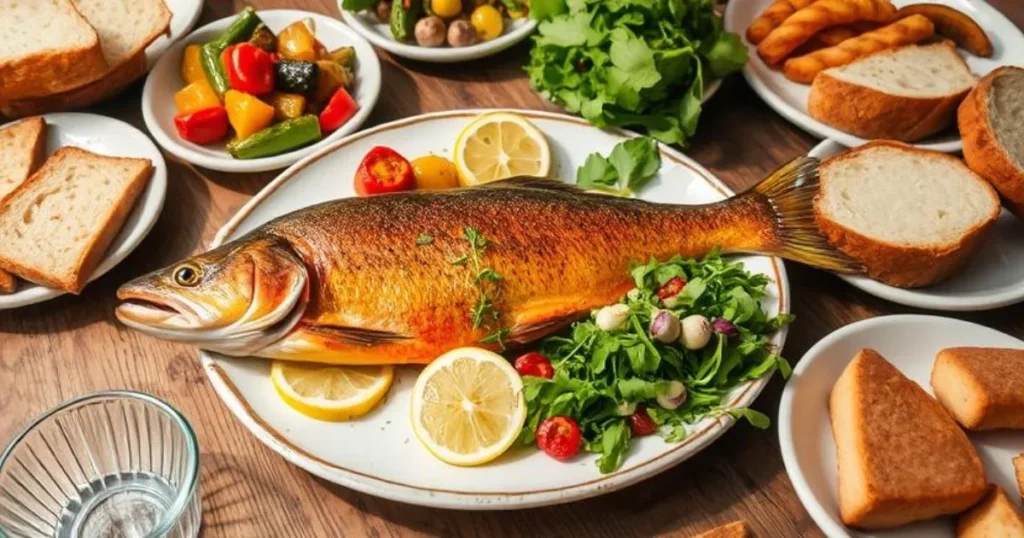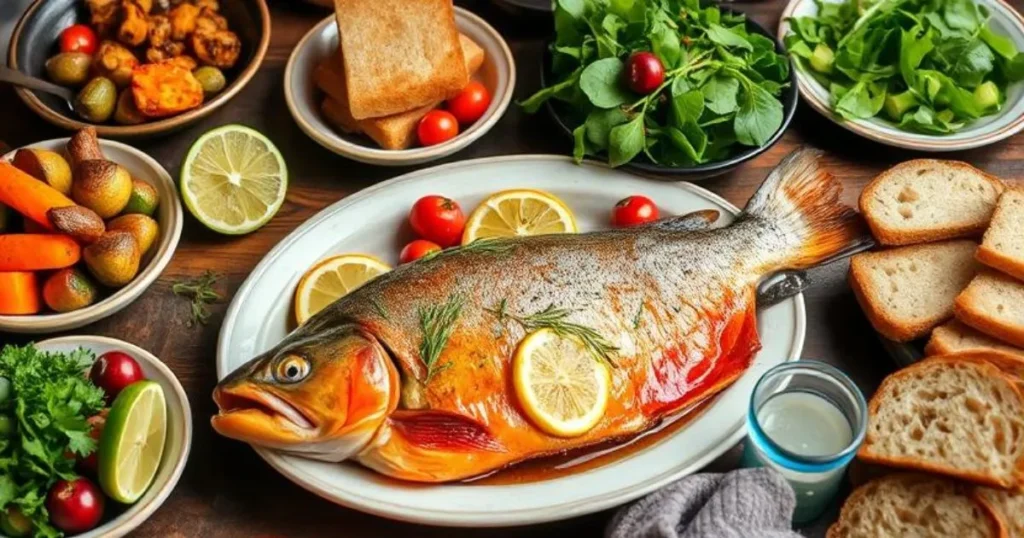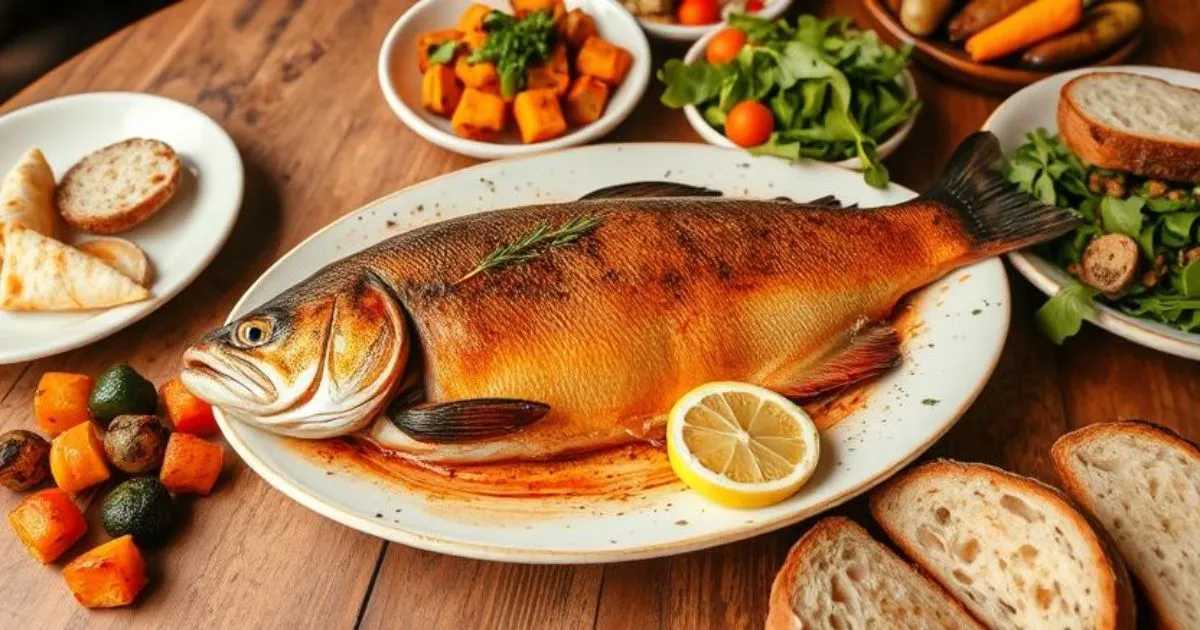Perfect Smoked Trout Brine for Maximum Flavor – A Step-by-Step Guide
Table of Contents
Smoking trout is an art. Whether you’re a seasoned expert or a beginner, creating the perfect smoked trout brine is the key to ensuring your fish turns out flavorful, moist, and absolutely delicious. In this guide, you’ll discover how the right brine can elevate your smoking game and help you achieve a mouthwatering dish that will impress every time. Get ready to unlock the secrets to crafting the perfect smoked trout brine for maximum flavor, turning your trout into a masterpiece with every smoke.
Why Brining is Essential for Smoked Trout
When it comes to smoking fish, particularly trout, the brine is the foundation that ensures the end result is full of flavor and tenderness. Brining works wonders by helping the fish absorb moisture and seasoning, creating that perfect balance of texture and taste. Without it, your trout may end up dry, bland, or over-seasoned. The process of brining is simple, but it requires a little attention to detail for the best results.
What Is a Trout Brine and Why Does It Matter?
A trout brine is essentially a solution made of water, salt, and sometimes sugar and spices, in which the fish is submerged before being smoked. The brine works in two ways:
- Moisture Retention: Salt helps the fish absorb moisture, preventing it from drying out during the smoking process. It’s this moisture that gives smoked trout its succulent texture.
- Flavor Infusion: As the fish absorbs the brine, it also takes on the flavors of any herbs, spices, or liquids you add. This helps enhance the taste and creates a deeper, richer smoked flavor.
By mastering the brining process, you can control the saltiness and flavor profile of your trout, ensuring it’s exactly the way you want it.
The Key Ingredients for the Perfect Smoked Trout Brine

To create the best brine for your trout, there are a few essential ingredients that you’ll need. These elements work together to balance the moisture, texture, and flavor. Let’s break down the core components:
1. Salt: The Foundation of the Brine
Salt is the primary ingredient in any brine. It draws out moisture from the fish, but it also helps the fish absorb the brine, adding flavor and tenderness. Kosher salt or sea salt is preferred for brining, as they dissolve well and are free of additives. The right amount of salt ensures your trout won’t be too salty, but will still have that characteristic “smoked fish” taste.
2. Sugar: Balancing the Saltiness
Sugar is added to the brine to balance the salt and help caramelize the exterior of the fish during smoking. Brown sugar is commonly used for its mild flavor, but you can also experiment with maple syrup or honey for an extra touch of sweetness.
3. Herbs and Spices: Infusing Depth and Complexity
Herbs and spices are the key to adding layers of flavor to your brine. Common additions include:
- Dill: The classic herb for trout that adds a refreshing, citrusy flavor.
- Garlic: A hint of garlic can give your brine a savory kick.
- Bay Leaves and Peppercorns: For a slightly earthy and spicy note.
- Mustard Seeds or Coriander: Adds a touch of complexity and tang.
Feel free to get creative with your brine and experiment with different spices to match your flavor preferences.
4. Optional Add-ins: Unleashing Unique Flavors
To make your smoked trout stand out, try incorporating unique ingredients. Consider adding:
- Citrus Zest: Lemon or orange zest can add a bright, zesty flavor to your brine.
- Alcohol: A splash of whiskey, bourbon, or cider can infuse the trout with subtle, smoky undertones.
How to Prepare the Perfect Smoked Trout Brine
Now that you have the ingredients, it’s time to prepare your brine. The process is straightforward but requires some patience to get it just right. Follow these steps to make the perfect brine for your trout:
Step 1: Dissolve the Salt and Sugar
Start by dissolving the salt and sugar into warm water. Stir until both are completely dissolved. The ratio is generally about 1 cup of salt and 1/2 cup of sugar per gallon of water, but this can be adjusted based on your preferences.
Step 2: Add Herbs and Spices
Once the salt and sugar are dissolved, it’s time to add your herbs and spices. For a classic brine, try a mix of garlic, dill, and peppercorns. For more complexity, you can experiment with additional flavors like mustard seeds or citrus zest. Allow the brine to steep for 10-15 minutes to allow the spices to infuse the water.
Step 3: Let the Brine Cool
After your brine is prepared, let it cool to room temperature before adding the fish. It’s important that the brine is cool, as warm brine could start to cook the fish prematurely.
Step 4: Submerge the Trout
Place your trout in a shallow pan or container, ensuring that the fish is fully submerged in the brine. If the fish isn’t fully submerged, you can use a weighted plate to keep it submerged. The brine needs to cover every inch of the trout for the flavors to infuse properly.
Step 5: Brine the Trout
The brining process typically takes anywhere from 2 to 12 hours depending on the size and thickness of the fish. If you’re brining smaller fillets, 2-4 hours should suffice. Whole trout will benefit from a longer brine time, anywhere from 8-12 hours. Remember, over-brining can make your fish too salty, so it’s better to err on the side of caution.

How to Smoke the Brined Trout for Maximum Flavor
Once your trout is properly brined, it’s time to smoke it to perfection. The smoking process is where the magic happens, and it’s essential to get the technique right to fully unlock the flavors.
Choosing the Right Smoker
There are several types of smokers available, and each one can deliver a slightly different result:
- Electric Smokers: These provide consistent temperature control and are easy for beginners.
- Charcoal Smokers: They offer a traditional smoking experience with a more robust flavor profile.
- Wood Pellet Smokers: Great for those who want the convenience of electric smokers with a more woodsy flavor.
- Kamado Grills: These ceramic smokers give a unique flavor due to the way they retain heat.
Each smoker has its strengths, so choose the one that best suits your taste and expertise.
Choosing the Right Wood for Smoking Trout
The type of wood you use plays a huge role in flavor. Trout benefits from lighter wood, which complements its delicate flavor:
- Alder: A traditional choice for trout, giving it a mild, sweet flavor.
- Applewood: Offers a slightly fruity, mild flavor that pairs beautifully with fish.
- Cherrywood: Provides a subtle, sweet flavor with a touch of tartness.
Avoid overly strong woods like mesquite or hickory, which can overwhelm the trout’s delicate taste.
Smoking Temperature and Duration
When smoking trout, you’ll want to aim for a temperature between 225°F and 250°F (107°C – 121°C). This low-and-slow approach ensures the fish is cooked thoroughly without drying out. Smoking times will vary based on the thickness of the fish, but generally, smoking trout takes about 2-3 hours.
Common Mistakes to Avoid When Smoking Trout
While smoking trout is simple, there are a few common mistakes that can ruin your hard work. Here are the top mistakes to watch out for:
1. Over-Brining Your Trout
If you leave your trout in the brine for too long, it can become overly salty. Always follow the recommended brining times based on the size of the fish and monitor the salt levels carefully.
2. Skipping the Drying Step
After removing the trout from the brine, it’s important to let the fish dry before smoking. This step ensures the smoke adheres to the fish and creates that beautiful, glossy finish.
3. Smoking at Too High of a Temperature
Smoking trout at a high temperature will dry it out. Stick to the low-and-slow method to ensure the fish remains tender and moist.
Flavor Variations for Your Smoked Trout Brine
Once you master the basic trout brine recipe, feel free to get creative with different flavor profiles. You can experiment with:
- Herb Variations: Try adding thyme, rosemary, or fennel for a more herbaceous brine.
- Sweeteners: Experiment with honey, molasses, or agave syrup for a unique sweetness.
- Citrus: Add lemon or orange zest for a fresh, zesty kick that cuts through the richness of the smoked trout.

Frequently Asked Questions (FAQ)
What Is the Best Brine Recipe for Smoking Trout?
The best brine recipe includes kosher salt, brown sugar, garlic, and dill. For extra flavor, you can add citrus zest, black peppercorns, and even a splash of bourbon.
How Long Should I Brine My Trout?
For fillets, 2-4 hours should suffice, while whole trout may require 8-12 hours. Always taste-test your brine and adjust based on your preferences.
Can I Reuse Smoked Trout Brine?
It’s not recommended to reuse brine after it has been in contact with raw fish, as it can harbor bacteria. For best results, make a fresh batch each time.
How Can I Tell If My Trout Is Over-Brined?
Over-brined trout will taste too salty and may have a mushy texture. If you’re unsure, it’s always better to brine for a shorter amount of time and adjust in future batches.
What Are the Best Woods to Use for Smoking Trout?
Alder, applewood, and cherrywood are all excellent choices for smoking trout. These woods impart a subtle, sweet smoke that complements the delicate flavor of the fish.
Conclusion: The Perfect Smoked Trout Awaits You
Mastering the art of smoked trout brine is a rewarding experience that will transform your fish smoking game. By following these steps and experimenting with different flavors, you can achieve perfectly brined and smoked trout every time. Whether you’re smoking for a special occasion or simply enjoying a delicious homemade meal, the perfect brine is your key to creating an unforgettable dish. So, grab your trout, prepare your brine, and start smoking – your taste buds will thank you!
Now that you know how to create the perfect smoked trout brine, it’s time to give it a try. Don’t forget to share your results and let us know how your smoked trout turned out. Happy smoking!

